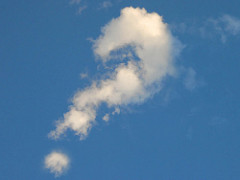Students’ Self-Assessment and Reflection
By Mary Bigelow
Posted on 2017-07-31
 Do you have ideas on how to help my middle school students become more thoughtful, independent learners? —J., Michigan
Do you have ideas on how to help my middle school students become more thoughtful, independent learners? —J., Michigan
In my experience, self-assessment and reflective activities gave students ownership in their learning.
Self-assessment is more than students “correcting” their own papers. When students self-assess, they reflect on the results of their efforts and their progress toward meeting the learning goals or performance expectations. They examine their work for evidence of quality and decide what to do next.
But if you ask middle school students to “reflect,” you may get puzzled looks or blank stares. Students don’t necessarily have this skill. They may initially think that an assignment or project is good simply because they spent a lot of time on it, they enjoyed it, or they worked very hard on it.
Students may need to be taught strategies for self-assessment through examples and practice. Take a piece of student work (with no name on it) and guide students through the process of comparing the work to the rubric. You may have to do this several times before students feel comfortable critiquing their own work.
Share with students how they could reflect on their own learning with responses to prompts such as: I learned that… I learned how to… I need to learn more about… It’s very powerful if you share your responses to your own work. , too.
In their notebooks, students could reflect on their work with prompts such as From doing this project I learned… To make this project better, I could…or Our study team could have improved our work by…
Honest self-assessment and reflection are difficult processes, even for adults. But they are valuable tools for developing lifelong learners.
Disclaimer: The views expressed in this blog post are those of the author(s) and do not necessarily reflect the official position of the National Science Teaching Association (NSTA).


